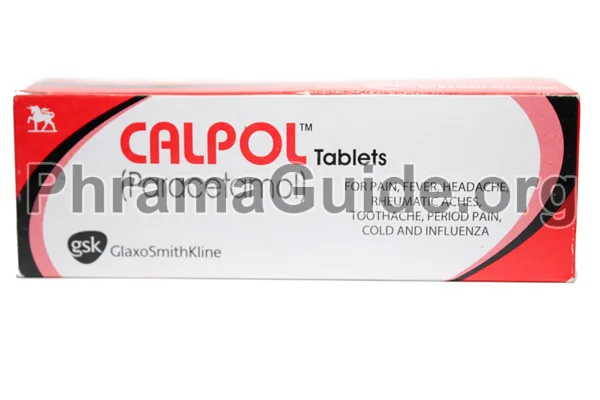Calpol is a commonly used over-the-counter pain reliever and fever-reducer medicine. It is generally considered safe when taken as directed. However, like all medications, Calpol can have potential side effects. It’s essential to use this medication responsibly and be aware of the following possible side effects.
- Allergic Reactions: Allergic reactions to Calpol are rare but can occur. Symptoms of an allergic reaction may include skin rash, itching, swelling of the face, lips, tongue, or throat, severe dizziness, or difficulty breathing. Seek immediate medical attention if you experience any signs of an allergic reaction.
- Liver Damage: One of the most significant concerns with Calpol is the risk of liver damage when taken in excessive doses or over a prolonged period. Overdosing on Calpol can lead to severe liver injury, which can be life-threatening. It is crucial to follow dosing instructions carefully and never exceed the recommended dose. If you suspect an overdose, seek immediate medical attention.
- Digestive Upset: Some individuals may experience gastrointestinal side effects, such as nausea or an upset stomach when taking Calpol. Taking it with food or a glass of milk may help alleviate these symptoms.
- Skin Reactions: Rarely, Calpol can cause skin reactions, including rash and blistering. If you notice any unusual skin changes after taking Calpol, discontinue use and consult a healthcare provider.
- Blood Disorders: In very rare cases, Calpol has been associated with blood disorders, such as a decrease in the number of white blood cells, red blood cells, or platelets. These can result in symptoms like unexplained bruising or bleeding, fever, and sore throat. Seek medical attention if you experience these symptoms.
- Kidney Damage: Although rare, there have been reports of kidney damage associated with the use of Calpol, especially when taken in high doses for extended periods. It is essential to follow dosing guidelines and avoid excessive or prolonged use.
- Hypersensitivity Reactions: Although rare, some individuals may experience hypersensitivity reactions to Paracetamol (Calpol’s active ingredient), which can include skin reactions, fever, and flu-like symptoms.

What is Calpol?
Calpol is one of the leading brands of Paracetamol, manufactured and marketed by Glaxosmithkline Pharmaceuticals Ltd (GSK).
Calpol : Available Formulations and Strengths
Presently, Calpol is available in Tablet, Syrup, and Suspension forms
Calpol Tablet : 500mg strength
Calpol Syrup: 120mg per 100ml strength
Calpol Six Plus Suspension : Paracetamol 250mg per 5ml strength
What Are The Possible Drug Interactions of Calpol?
- Warfarin and Other Blood Thinners: Calpol may increase the risk of bleeding when taken in combination with blood-thinning medications like warfarin. It’s important to monitor for signs of bleeding, such as easy bruising or bleeding gums, and inform your healthcare provider if you are taking both medications.
- Alcohol: Alcohol can increase the risk of liver damage when combined with paracetamol. Chronic alcohol use and excessive alcohol consumption can place additional stress on the liver, making it more susceptible to the toxic effects of paracetamol. It is advisable to avoid alcohol while taking paracetamol.
- Certain Antibiotics: Calpol may interact with certain antibiotics, such as isoniazid, increasing the risk of liver damage. Inform your healthcare provider if you are taking antibiotics, especially if you are using Calpol regularly.
- Medications That Affect Liver Enzymes: Drugs that affect liver enzymes, such as carbamazepine, phenytoin, and rifampin, may alter the way the body metabolizes Calpol, potentially reducing its effectiveness or increasing the risk of side effects. Inform your healthcare provider if you are taking any of these medications.
- CYP2E1 Inducers: Certain medications that induce the activity of the liver enzyme CYP2E1 may enhance the conversion of Calpol into a more toxic compound. This can increase the risk of liver damage. Inform your healthcare provider if you are taking drugs that induce CYP2E1.
- Opioid Pain Medications: Some combination opioid pain medications contain paracetamol as one of their ingredients. Using additional Calpol while taking these medications can lead to unintentional overdose, as both may have paracetamol. Be sure to follow your healthcare provider’s dosing instructions when using combination medications.
- Probenecid: Probenecid, used to treat gout, can decrease the elimination of Calpol from the body, potentially leading to higher blood levels of the medication. This interaction may require dosage adjustments.
- Isoniazid: Isoniazid, used to treat tuberculosis, can increase the risk of liver damage when combined with Calpol. Careful monitoring is necessary if these drugs are used together.
- Antiretroviral Medications: Some antiretroviral medications used to treat HIV may interact with Calpol. Consult with your healthcare provider if you are taking both types of medications.
- Herbal Supplements and Dietary Factors: Certain dietary factors, such as fasting or a low-protein diet, may affect the way the body processes Calpol. Additionally, some herbal supplements may interact with Calpol. Inform your healthcare provider about any dietary changes or supplements you are using.
Related Links :

Leave A Comment